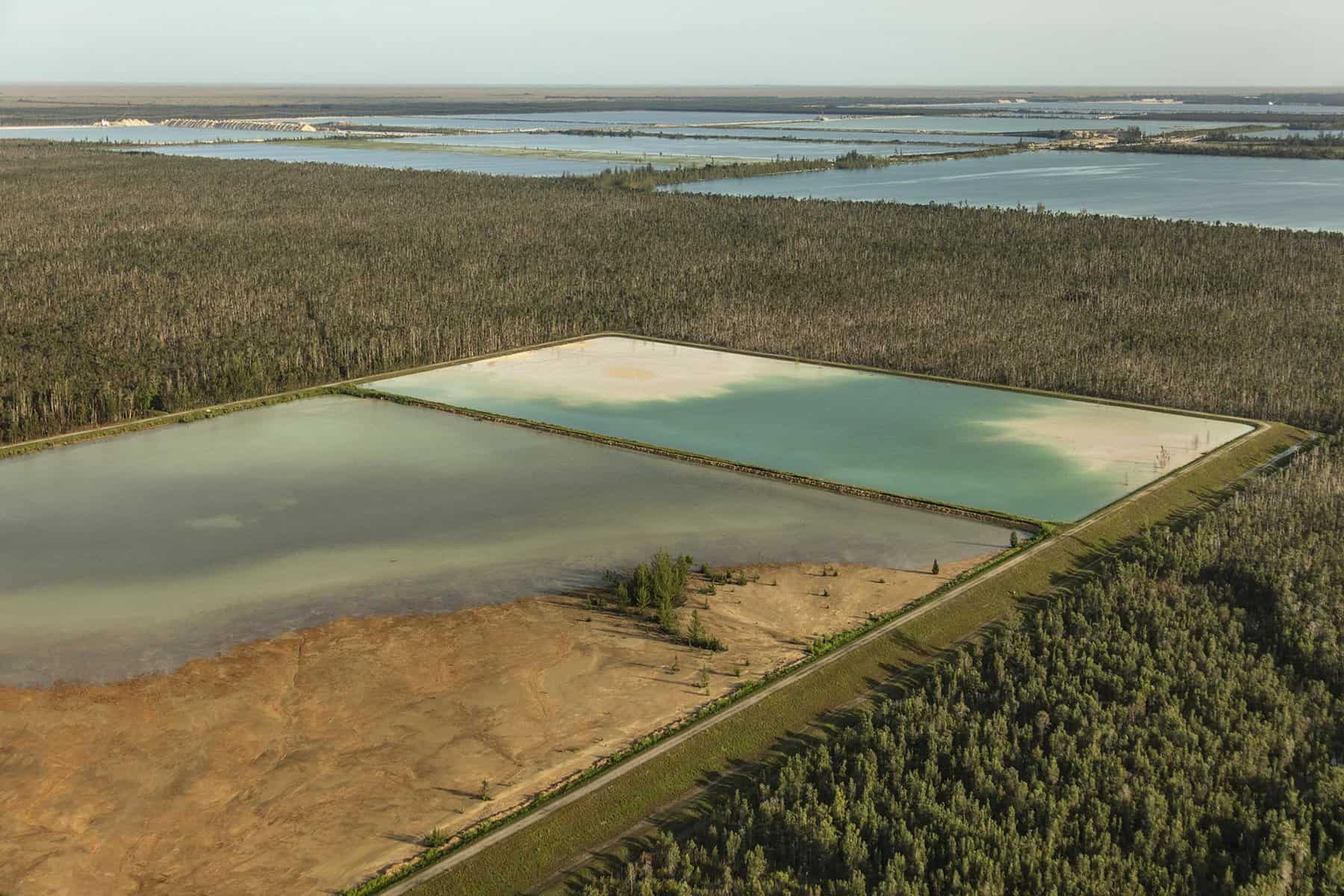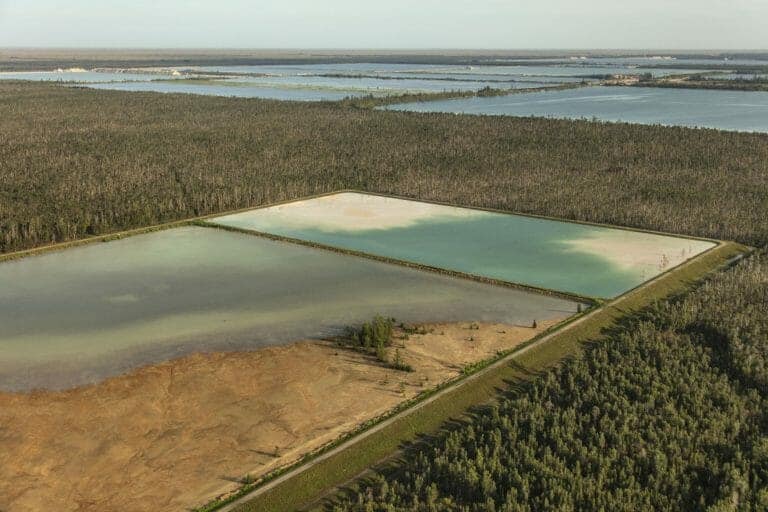A rock lake at the edge of Miami-Dade County. PHOTOGRAPHER: ANASTASIA SAMOYLOVA FOR BLOOMBERG BUSINESSWEEK
The city has another serious water problem.
One morning in June, Douglas Yoder climbed into a white government SUV on the edge of Miami and headed northwest, away from the glittering coastline and into the maze of water infrastructure that makes this city possible. He drove past drainage canals that sever backyards and industrial lots, ancient water-treatment plants peeking out from behind run-down bungalows, and immense rectangular pools tracing the outlines of limestone quarries. Finally, he reached a locked gate at the edge of the Everglades. Once through, he pointed out the row of 15 wells that make up the Northwest Wellfield, Miami-Dade County’s clean water source of last resort.
Yoder, 71, is deputy director of the county’s water and sewer department; his job is to think about how to defend the county’s fresh drinking water against the effects of climate change. A large man with an ambling gait, Yoder exudes the calm of somebody who’s lived with bad news for a long time.
“We have a very delicate balance in a highly managed system,” he said in his rumbly voice. “That balance is very likely to get upset by sea-level rise.” What nobody knows is when that will happen, or what happens next.
From ground level, greater Miami looks like any American megacity—a mostly dry expanse of buildings, roads, and lawns, sprinkled with the occasional canal or ornamental lake. But from above, the proportions of water and land are reversed. The glimmering metropolis between Biscayne Bay and the Everglades reveals itself to be a thin lattice of earth and concrete laid across a puddle that never stops forming. Water seeps up through the gravel under construction sites, nibbles at the edges of fresh subdivisions, and shimmers through the cracks and in-between places of the city above it.
Miami-Dade is built on the Biscayne Aquifer, 4,000 square miles of unusually shallow and porous limestone whose tiny air pockets are filled with rainwater and rivers running from the swamp to the ocean. The aquifer and the infrastructure that draws from it, cleans its water, and keeps it from overrunning the city combine to form a giant but fragile machine. Without this abundant source of fresh water, made cheap by its proximity to the surface, this hot, remote city could become uninhabitable.
Climate change is slowly pulling that machine apart. Barring a stupendous reversal in greenhouse gas emissions, the rising Atlantic will cover much of Miami by the end of this century. The economic effects will be devastating: Zillow Inc. estimates that six feet of sea-level rise would put a quarter of Miami’s homes underwater, rendering $200 billion of real estate worthless. But global warming poses a more immediate danger: The permeability that makes the aquifer so easily accessible also makes it vulnerable. “It’s very easy to contaminate our aquifer,” says Rachel Silverstein, executive director of Miami Waterkeeper, a local environmental protection group. And the consequences could be sweeping. “Drinking water supply is always an existential question.”
County officials agree with her. “The minute the world thinks your water supply is in danger, you’ve got a problem,” says James Murley, chief resilience officer for Miami-Dade, although he adds that the county’s water system remains “one of the best” in the U.S. The questions hanging over Miami and the rest of Southeast Florida are how long it can keep its water safe, and at what cost. As the region struggles with […]
Please continue at the original article at Bloomberg Businessweek.
More about the water in Florida:
As bouts with killer algae rose, Florida gutted its water quality monitoring
The lesser-known threat from sea-level rise? Saltwater intrusion into Florida’s freshwater wells.
Florida water — court lets industry group challenge water standards
Report finds Florida drinking water ranks 2nd worst in nation



